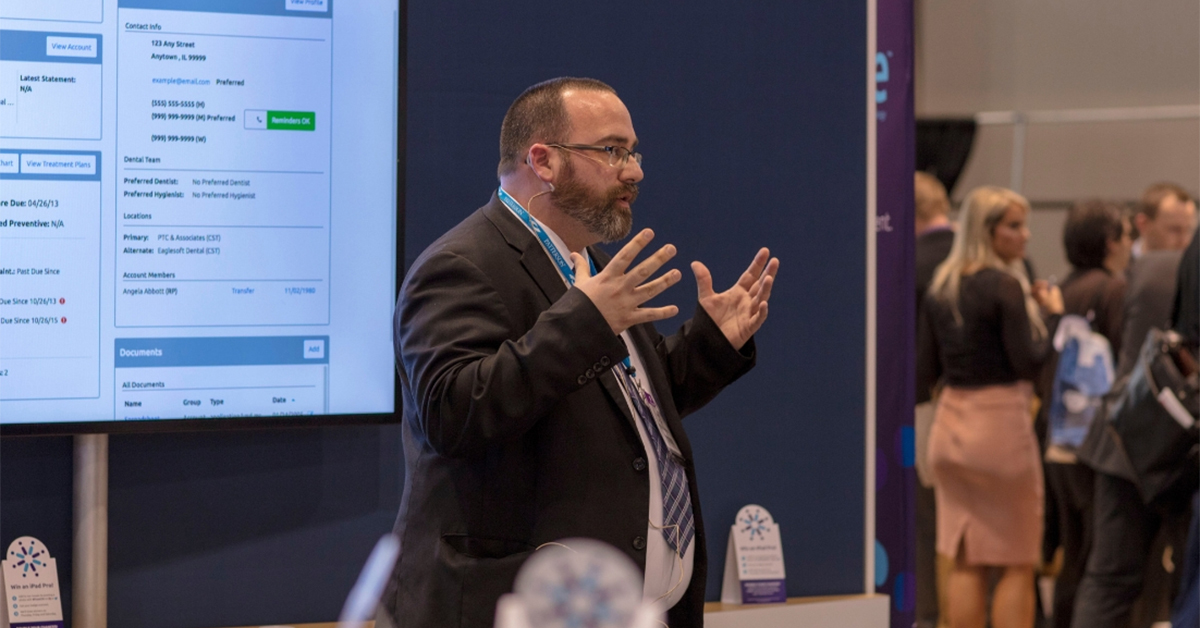Switching software platforms. Just the idea of changing your dental practice management software system can give you the cold sweats. After all, changing anything in your practice is hard. But, changing software systems—the key clinical and communication system in your practice? That can be a tall task.
But, it doesn’t have to be as hard as you might think it is.
In fact, if you take the proper steps, changing software platforms can be relatively painless. And, in the end it should lead to more productivity, more efficient processes, and ultimately, a better experience for your patients.
Why do dentists change software platforms? Some dentists change because they crave new and different features that they believe will benefit their practice—and their patients. Better workflow for an entire team is just one example. I remember working with an office that had three different databases and a manual process for appointment reminders. Once I explained the need to bring it all under one umbrella, the office knew this was the best avenue to deliver a great experience for their patients. Others change because they want to better protect patient data. Yet others want more accessibility.
And, keep in mind, some dentists aren’t just switching software—they’re switching philosophies by shifting to cloud-based software. According to some reports, 10-20 percent of dental practices have already made this transition, and I’m sure many more will consider it in the next few years. We talk to people about the shift to the cloud all the time as part of our discussions around Fuse—our own cloud-based practice management solution.
So, we know why dentists are making the change. But, what common challenges are dentists running into when changing software platforms?
The biggest concern is probably data conversion and migration. In essence, replacing long-time paper charts with digital data. As you can imagine, this is a time-consuming process. And protecting confidential patient data is absolutely paramount. So, dentists are constantly concerned with how this data migration will work.
A close second is the challenge of actually making the change. In some cases, dental practices have used the same software for 20-plus years—now, they’re changing to an entirely new system! That often means new workflows, structures, and processes. And, even if the new system means the practice will eventually be more efficient, and offer better patient care, it doesn’t mean it will be easy for the team. Change is hard—for everyone.
Communication is another huge challenge when making the shift to a new software system. I’ve worked with some practices where I show up the first day of the implementation and the team is wondering why I am there! They had no idea they were changing software systems.
Bottom line: There’s no shortage of challenges. But, there are ways to help mitigate these concerns and make the process less painful. After being a part of hundreds of software system changes for customers over the years, I’ve noticed three steps that dentists can take to help make the process a little easier:
1: Research. Research. Research.
Make sure you take ample time to investigate all your software options on the front end. Ask for demos. And be sure to ask the right—and hard—questions. Will the company show you what your data will look like in the new system? What data will convert and what won’t? What kinds of training and support does the company offer? Are they actively developing their software? How long have they been around? Does your current hardware need to be updated, too? Do your due diligence to make sure there are no surprises when you start implementation.
2: Ask About Key Integrations
You most likely use other technology in your office (intraoral cameras, digital imaging, etc.)—how will your new software “talk” to those tools and technologies? What other integrations does the software provide? Does the software “play nicely” with third-party vendors? Does it have agreements with other products? Make sure your new software works with everything else in your office, too.
3: Invest in Your Team
An investment in new software is a big deal. But, in order to optimize your software investment, you’ll want to also invest in your team. Be sure to focus on training and ongoing learning to make sure you’re utilizing all the features of the new software. Make time for this training—and remember, as adult learners, we often need to understand the “why,” so allow even more time for the team to get smarter about the new processes and understand what’s happening and the rationale behind it.
My final piece of advice? Be sure to celebrate small victories along the way. Changing software systems requires hard work, patience, and resiliency on the part of your team. Make sure you’re taking time to acknowledge that and highlight wins as you progress through this journey.
Dan Easty is a National Technology Advisor for Patterson Dental. He has spent the last thirteen-plus years educating and training hundreds of offices to become paperless and helping them implement technology into their practices.







You must be logged in to post a comment.